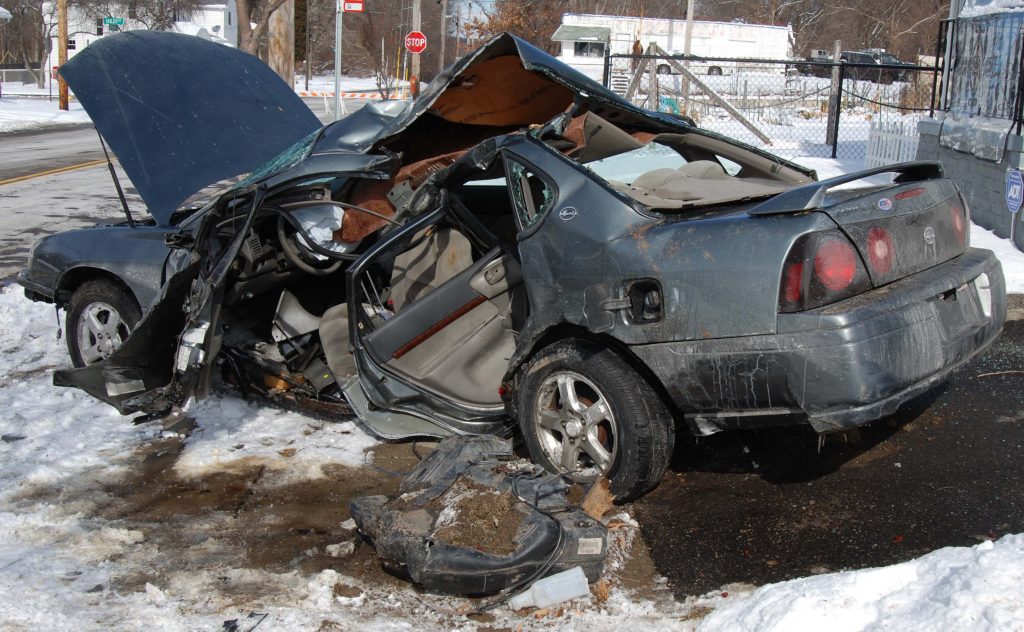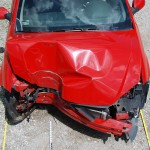What's New
Fatalities up While Crashes, Injuries Down

Crash Photos courtesy of the Akron and Kent Police Departments.
The latest three-year analysis released by AMATS shows that crash-related fatalities increased in the Greater Akron area, despite fewer vehicle crashes and crash-related injuries between the years 2017 through 2019.
The new report is based on AMATS’ analysis of more than 55,000 motor vehicle, bicycle and pedestrian-related crash records for the area’s roadway sections and intersections provided by the Ohio Department of Transportation (ODOT). For the 2017-2019 Crash Report, the agency identified 181 high-crash roadway sections and 350 high-crash intersections in the region.

Pulay
AMATS Transportation Improvement Program Coordinator David Pulay says that fatalities and fatal crashes in the region increased between 2018 and 2019. The number of fatalities in the Greater Akron area jumped from 35 in 2018 to 44 in 2019, an increase of 26 percent. The number of fatal crashes rose from 31 in 2018 to 43 in 2019, an increase of nearly 39 percent. (For data analysis, AMATS considers a crash as a single event, but a crash may involve multiple vehicles and result in multiple injuries or fatalities.)
Pulay warns that such increases in fatalities may not have ended with 2019. The agency is seeing evidence that fatalities continued to rise in the Greater Akron area despite lower traffic volumes resulting from the statewide COVID-19 lockdown. Preliminary data shows that there were 15,282 crashes in 2020, which is significantly lower than in 2019, but the region recorded 59 fatalities, according to Pulay.
“Interestingly enough the increases in crashes that we saw here in our region happened during a time of lower traffic volume on our roadways. There is speculation that these increases in fatalities may have been due to more people speeding and driving recklessly because of less traffic,” he adds. Precise crash and fatality figures for the Greater Akron area in 2020 will be released in the agency’s next triennial crash report.
 Despite the increase in fatalities, the news isn’t all bad for the region in the agency’s latest crash report. The report finds that area crashes trended down from 18,787 in 2017 to 18,697 in 2018 before dropping to 17,746 in 2019. That decline represents a decrease of 5 percent or 951 fewer crashes in 2019 than the year before. Crashes that resulted in injuries also decreased from 4,261 in 2018 to 4,101 in 2019, a decrease of 160 or four percent.
Despite the increase in fatalities, the news isn’t all bad for the region in the agency’s latest crash report. The report finds that area crashes trended down from 18,787 in 2017 to 18,697 in 2018 before dropping to 17,746 in 2019. That decline represents a decrease of 5 percent or 951 fewer crashes in 2019 than the year before. Crashes that resulted in injuries also decreased from 4,261 in 2018 to 4,101 in 2019, a decrease of 160 or four percent.
The report contains other mixes of good news and bad news for the region. Crashes that resulted in an injury decreased from 4,261 in 2018 to 4,101 in 2019. Unfortunately, crashes that resulted in serious injuries increased from their decade-low nadir of 290 in 2018 to 303 in 2019.
Out of the 252 bicycle-related crashes that occurred between 2017 and 2019, 183 or 73 percent resulted in an injury and seven in a fatality. The most recent fatality number for bicycle-related crashes represents a more than doubling of fatalities from the previous report’s recorded three fatalities.
During the same three-year period, there were 466 pedestrian-related crashes with 385 or 83 percent resulting in an injury and 24 in a fatality. Like bicycle-related crashes, fatalities from pedestrian-related crashes saw a significant increase from the previous report when 17 fatalities were recorded. Overall, pedestrians accounted for over 19 percent of all area crash-related fatalities that occurred between 2017 and 2019.
High-crash locations identified in the report may be used by communities as a starting point when seeking federal Highway Safety Program funds through ODOT for safety improvement projects. The 2017-2019 Crash Report is available by clicking here.